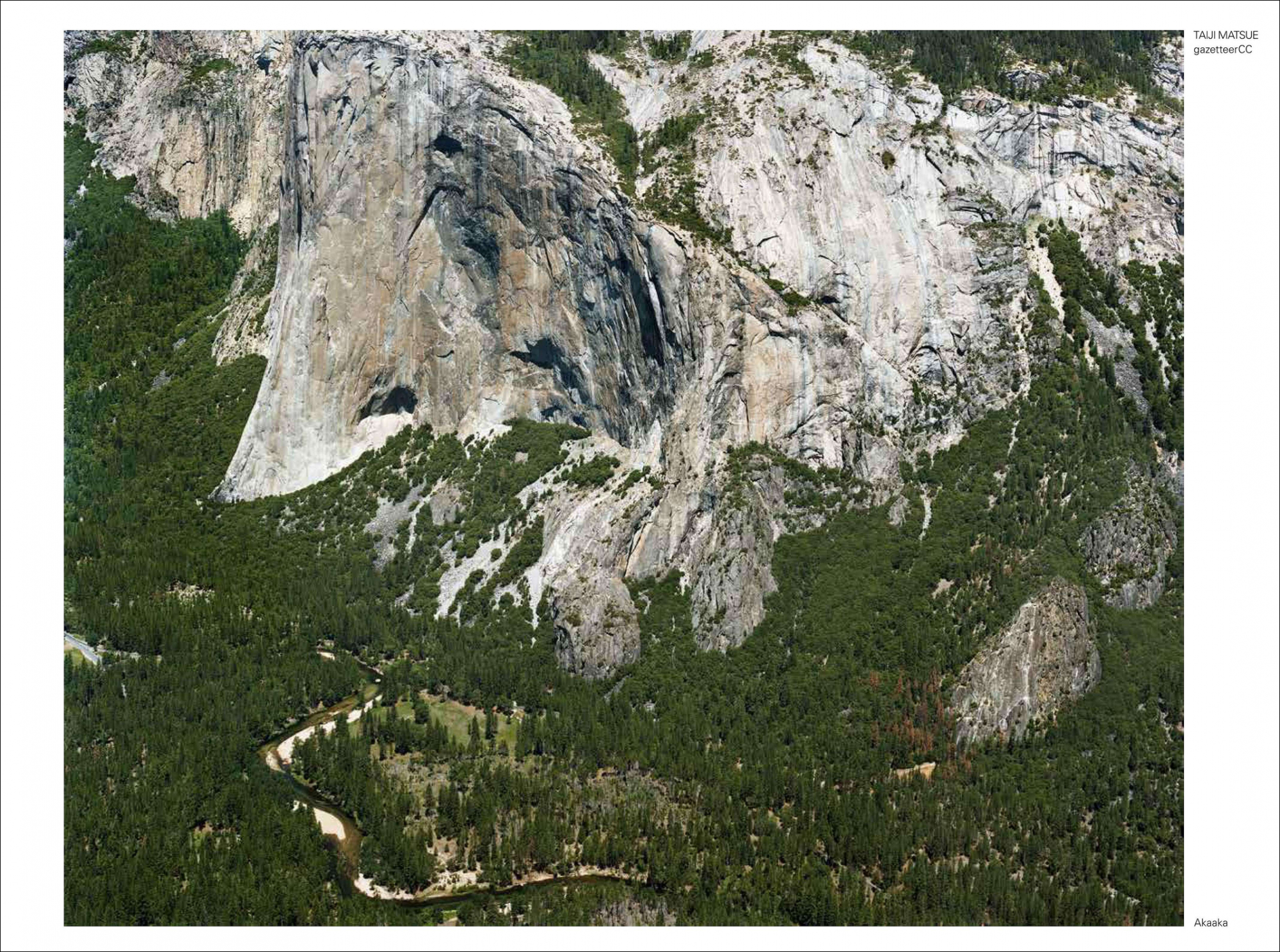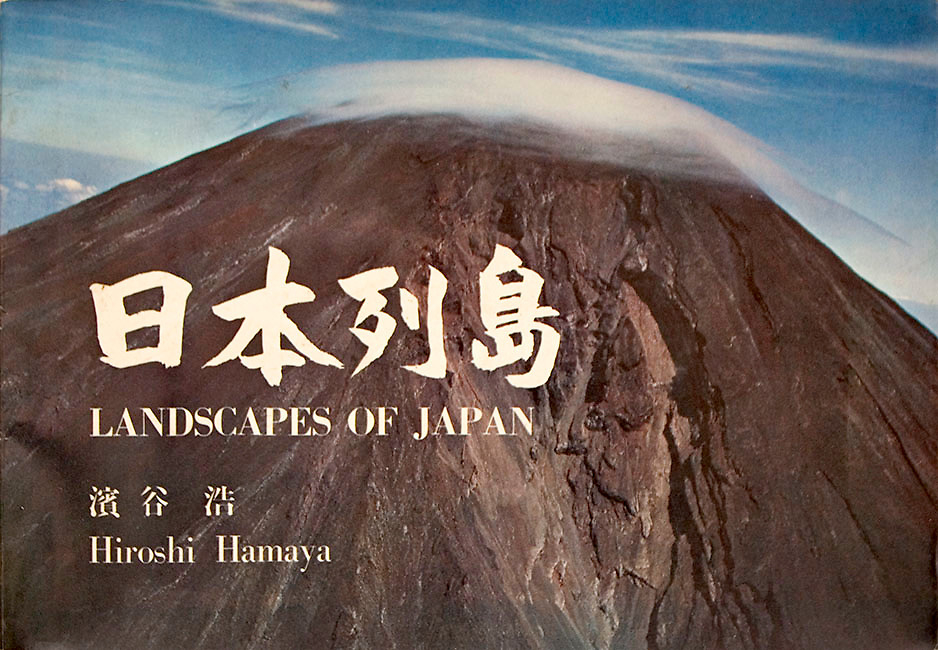Cultural Currency 9: Matsue Taiji’s gazetteerCC and Hamaya Hiroshi’s Landscapes of Japan
Alternatives to “Landscape” (Part 1)
By Shimizu Minoru
2023.02.26

gazetteerCC, a voluminous collection of landscapes and cityscapes shot by Matsue Taiji on analog color film in various locations around the world between 2000 and 2017, has been published by Akaaka. The book is a companion volume to TAIJI MATSUE (Ugeyan, 2003), an early collection of black and white photographs, and the works in it formed the basis of the series that followed, including “cell,” “LIM”, “JP-” and “makieta.” For more on the works and the book’s layout, see my essay in gazetteerCC.1 Here, I would like to concentrate on locating the book and Matsue Taiji himself within the history of postwar photography in Japan.
 When this standard realist discourse is applied to postwar Japan, inconsistencies arise. This is because the Japan “as it is” that needed to be exposed was none other than the artificial concoction that was “occupied Japan.” To begin with, contrary to the measures imposed on Germany, the US-led occupation of Japan completely rejected modern Japan as it had existed since the opening of the country to the West. But pre-modern (traditional) Japan was none other than a fiction created retrospectively at the same time as modernization, and, as symbolized by the westernization of the Imperial family, it had already been abandoned by the Japanese themselves. As for the new Japan, the occupation policies quickly shifted in the late 1940s with the so-called Reverse Course, in addition to which a security treaty between Japan and the US was combined with the Treaty of San Francisco as a condition for ending the occupation. This meant the new Japan being incorporated into the Cold War regime under the control of the US (in other words, into a two-fold fiction) as a strategic military base that was geopolitically important in East Asia.
In the standard “dualistic system” versus “as-it-is exterior” discourse, the “exterior” is above all the exterior of the system, which is to say it is a projection from the system’s interior onto its exterior. In postwar Japan, because this system (traditional Japan, modern Japan, new Japan) had been completely destroyed, a projection onto its exterior was an impossibility. In other words, an “as it is,” “naked” “truth” did not exist. To be colonized means to be robbed of “as it is-ness.” For this very reason, Japanese photographers eagerly desired an unknown, absent “as it is-ness” (onto which was superimposed an ideal “Japan”) and continued to reject the fiction (the Japan-US Security Treaty system) with which they were presented. This was a negative realism with no knowledge of an “exterior.”
At the same time, the 1960s were a period when, due to the advent of the information media society, the modernist belief I mentioned earlier began to wane. This was a period when the “exterior” pole, which is to say the “real,” “as it is,” “naked” “truth,” became caught up in the circulation of capital as products that aroused desire more than anything else. With the advent of a world (or “social landscape”) in which the world as it is that modernist photographers had been pursuing was already continually being realized by the media, “contemporary photographers” abandoned this belief and were forced to rethink photography from the ground up.
The distinctive characteristic of postwar Japanese photography is that, while aware of the advent of the media society that was gradually demolishing the belief of modernist photography, modernism in photography remained alive by being forced into a situation brought about by the postwar US-Japan regime in which “as it is-ness” was absent, and went on to develop various realisms. To put it another way, because “as it is-ness” had been taken away, there were many photographers who could not abandon it (i.e., the modernist belief).
When this standard realist discourse is applied to postwar Japan, inconsistencies arise. This is because the Japan “as it is” that needed to be exposed was none other than the artificial concoction that was “occupied Japan.” To begin with, contrary to the measures imposed on Germany, the US-led occupation of Japan completely rejected modern Japan as it had existed since the opening of the country to the West. But pre-modern (traditional) Japan was none other than a fiction created retrospectively at the same time as modernization, and, as symbolized by the westernization of the Imperial family, it had already been abandoned by the Japanese themselves. As for the new Japan, the occupation policies quickly shifted in the late 1940s with the so-called Reverse Course, in addition to which a security treaty between Japan and the US was combined with the Treaty of San Francisco as a condition for ending the occupation. This meant the new Japan being incorporated into the Cold War regime under the control of the US (in other words, into a two-fold fiction) as a strategic military base that was geopolitically important in East Asia.
In the standard “dualistic system” versus “as-it-is exterior” discourse, the “exterior” is above all the exterior of the system, which is to say it is a projection from the system’s interior onto its exterior. In postwar Japan, because this system (traditional Japan, modern Japan, new Japan) had been completely destroyed, a projection onto its exterior was an impossibility. In other words, an “as it is,” “naked” “truth” did not exist. To be colonized means to be robbed of “as it is-ness.” For this very reason, Japanese photographers eagerly desired an unknown, absent “as it is-ness” (onto which was superimposed an ideal “Japan”) and continued to reject the fiction (the Japan-US Security Treaty system) with which they were presented. This was a negative realism with no knowledge of an “exterior.”
At the same time, the 1960s were a period when, due to the advent of the information media society, the modernist belief I mentioned earlier began to wane. This was a period when the “exterior” pole, which is to say the “real,” “as it is,” “naked” “truth,” became caught up in the circulation of capital as products that aroused desire more than anything else. With the advent of a world (or “social landscape”) in which the world as it is that modernist photographers had been pursuing was already continually being realized by the media, “contemporary photographers” abandoned this belief and were forced to rethink photography from the ground up.
The distinctive characteristic of postwar Japanese photography is that, while aware of the advent of the media society that was gradually demolishing the belief of modernist photography, modernism in photography remained alive by being forced into a situation brought about by the postwar US-Japan regime in which “as it is-ness” was absent, and went on to develop various realisms. To put it another way, because “as it is-ness” had been taken away, there were many photographers who could not abandon it (i.e., the modernist belief).
1 Shimizu Minoru, “Excess of Photography,” in Matsue Taiji, gazetteerCC (Kyoto: Akaaka Art Publishing, 2023).
2 John Szarkowski, “The thing itself,” in Photographer’s Eye (New York: MoMA, 1966), 12.
—————————————————————-
Shimizu Minoru
Critic. Professor, Doshisha University.
Matsue Taiji’s gazetteerCC is available from Akaaka Art Publishing.
*
Modernist photography is underpinned by the following belief: “Our faith in the truth of a photograph rests on our belief that the lens is impartial, and will draw the subject as it is, neither nobler nor meaner.”2 Realist discourse aims at “as it is-ness” in the form of a neutrality that is not biased towards either of two antagonistic concepts (neither… nor…), this neutral world constituting the “outside” of the world formed by these concepts. In other words, the core of realist photography is a third, “as it is,” real world beyond the dualistic antagonisms between beauty and ugliness, good and bad, superiority and inferiority, high and low, which is to say the world of things themselves. This discourse, which arose together with straight photography in the 1910s, was further formulated in a way that was easy to understand by Surrealism in the 1920s and 30s. According to the Surrealists, reality was dualized as normal reality and sur- (“as-it-is”/ true) reality, the latter hidden behind the former, waiting to be revealed through the work (creativity) of artists. By transforming the discourse on “as it is-ness” into a discourse on “exposure” or “nakedness,” Surrealism resolved the contradiction between the artificial manipulation accompanying photography (framing, shooting, developing, selecting) and the “as it is-ness” of the abandoning of artifice and just being oneself that was required as a result, giving rise to a range of “documentaries.”
Hamaya Hiroshi, Landscapes of Japan (1964)
(To be continued.)
—————————————————————-1 Shimizu Minoru, “Excess of Photography,” in Matsue Taiji, gazetteerCC (Kyoto: Akaaka Art Publishing, 2023).
2 John Szarkowski, “The thing itself,” in Photographer’s Eye (New York: MoMA, 1966), 12.
—————————————————————-
Shimizu Minoru
Critic. Professor, Doshisha University.
Matsue Taiji’s gazetteerCC is available from Akaaka Art Publishing.